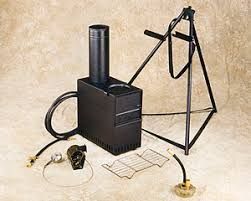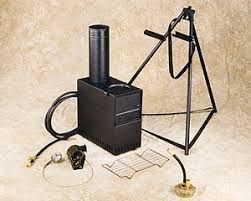
Tent Heater Guide: Explore Key Tips, Insights & Safe Use Basics
A tent heater is a portable heating device used to warm enclosed outdoor spaces such as camping tents, temporary shelters, emergency setups, and field environments. It exists to make cold-weather camping and outdoor stays more comfortable and safer by reducing exposure to low temperatures. Tent heaters come in several forms, including propane heaters, electric heaters, catalytic heaters, and integrated portable heating units designed specifically for outdoor use.
The rise of outdoor recreation, winter camping, and remote fieldwork has increased the need for reliable and safe heating options. Modern tent heaters are designed to function efficiently in limited spaces, providing stable warmth while aiming to minimize risks such as carbon monoxide, overheating, or accidental burns.

Importance
Tent heaters matter today because outdoor activities have expanded into every season. People now engage in backpacking, mountaineering, wildlife photography, and adventure travel throughout the year. In colder areas, nighttime temperatures can drop sharply, even during mild seasons, increasing the need for dependable heat sources.
They help address several important challenges:
-
Managing cold exposure in outdoor or high-altitude environments
-
Supporting emergency situations, such as disaster-response shelters
-
Enabling extended outdoor work, including research, forestry, and field monitoring
-
Improving comfort during winter recreation, from family camping to solo expeditions
These heaters also affect a wide audience:
-
Campers and trekkers
-
Outdoor educators and guides
-
Emergency teams and disaster-relief workers
-
Festival or event attendees in temporary shelters
-
Wildlife researchers and field teams
As climate patterns shift, unpredictable temperature drops and longer cold seasons make cold-weather planning more essential. This places tent heaters among the key equipment for safe outdoor experiences.
Recent Updates
The past year saw notable developments in heating technology and safety enhancements. Many updates focused on energy efficiency, emission reduction, and portable power integration.
Some noteworthy trends from 2024–2025 include:
-
Improved low-oxygen shutoff systems (2024)
Manufacturers introduced more reliable sensors to help reduce the risk of combustion-related accidents in enclosed spaces. -
Increased use of electric tent heaters powered by portable power stations (2024–2025)
As portable battery systems became more common, many outdoor users shifted toward electric options that do not rely on combustion. -
Better insulation materials for tents (2025)
Several brands introduced lightweight, reflective inner-wall materials that help retain warmth, reducing the need for constant high heat output. -
Growing focus on eco-friendly heating solutions
Interest in renewable-energy camping gear, low-emission heaters, and efficient catalytic systems has increased. -
Safety awareness campaigns by outdoor organizations
During winter 2024–2025, many hiking associations emphasized responsible heating practices after several cold-weather incidents worldwide.
These updates reflect a broader shift toward safer and more sustainable outdoor equipment.
Laws or Policies
Tent heaters are influenced by safety standards, environmental rules, and equipment-use regulations. While requirements vary by region, several common policies apply in many countries:
-
Certification requirements for heating devices
Portable heaters often need to comply with national standards such as CE, CSA, BIS, or other certification systems depending on the country. These certifications usually cover emissions, structural integrity, and fire safety. -
Restrictions on fuel storage in public camping areas
Some national parks regulate how much fuel can be brought into designated zones and how it must be stored to prevent hazards. -
Prohibition of open-flame devices in certain protected areas
Fire-sensitive environments, wildlife reserves, and dry-forest zones may limit or restrict heaters that rely on combustion. -
Indoor air-quality regulations
Many countries enforce rules regarding carbon monoxide limits. These affect how portable heaters are designed, particularly models intended for enclosed spaces. -
Mandatory safety labeling
Recent policy updates (2024–2025) require clearer instructions and hazard icons on outdoor heating devices, especially those using gas or liquid fuel.
While tent heaters are generally allowed in most camping zones, users must follow local rules related to fuel handling, fire prevention, and equipment specifications. These rules help reduce risks and protect natural environments.
Tools and Resources
Several tools, platforms, and resources help outdoor users choose and operate tent heaters safely. These include:
Helpful Websites
-
Outdoor safety knowledge bases
-
Camping temperature-rating guides
-
Weather forecasting platforms for cold-night predictions
Useful Tools and Calculators
-
BTU calculators for estimating heat requirements based on tent size
-
Electric power consumption estimators
-
Carbon-monoxide awareness resources
-
Portable power runtime calculators
Apps
-
Weather monitoring apps
-
Altitude and temperature tracking apps
-
Emergency alert apps
-
Outdoor gear checklists
Helpful Templates
-
Tent-insulation checklist
-
Cold-weather camping preparation sheet
-
Safety-equipment inventory list
These resources assist campers and outdoor workers in planning, choosing appropriate heating methods, and understanding safety measures.
Small Reference Table: Types of Tent Heaters
| Heater Type | Power Source | Key Strength | Common Use |
|---|---|---|---|
| Propane Heater | Gas canister | Strong heat output | Cold-weather camping |
| Electric Heater | Portable batteries or grid power | No combustion emissions | Camps with electrical access |
| Catalytic Heater | Fuel + catalytic process | Efficient and quiet | Insulated tents |
| Integrated Heating Units | Mixed power systems | Stable long-duration heat | Expedition shelters |
FAQs
1. Are tent heaters safe to use inside a tent?
Tent heaters can be safe when used correctly and when they meet certified safety standards. Users should ensure proper ventilation, follow all instructions, and avoid leaving the heater unattended. Models with low-oxygen sensors and automatic shutoff features provide additional safety.
2. What is the best type of heater for winter camping?
The ideal type depends on tent size, available power sources, and environmental conditions. Propane heaters provide strong heat, while electric heaters are preferred where battery or grid power is available. Catalytic heaters are often used in insulated tents where steady low-emission heating is needed.
3. How can I reduce condensation when using a heater?
Maintaining slight ventilation helps balance humidity levels. Using tent insulation mats and keeping wet gear outside the sleeping area also prevents excess moisture buildup.
4. Do tent heaters require special maintenance?
Most require basic upkeep such as checking fuel connections, inspecting wiring, cleaning dust filters, and monitoring sensor functionality. Regular examination ensures safety and efficient performance.
5. Can a tent heater warm a large family tent?
Yes, but the heater must match the tent’s volume. Users often calculate approximate heating needs using BTU or wattage estimators to choose a model suitable for larger spaces.
Conclusion
Tent heaters play an essential role in making outdoor living more comfortable, safe, and practical during cold seasons. They help campers, researchers, and emergency responders manage low temperatures in various environments. With recent improvements in safety sensors, emission control, and portable power options, users now have more dependable and energy-efficient heating choices.
Understanding local regulations, selecting the right heater type, and using tools such as BTU calculators or weather-monitoring apps contribute to well-planned and safe outdoor stays. As outdoor activities continue to grow across colder months, tent heaters remain an important part of modern cold-weather preparedness.






